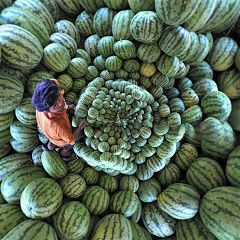
The fresh produce industry has to manage the increasing availability of big data in terms of speed and quantity.
The features of big data are volume, speed, variety, variability and complexity in such a way that traditional analysis tools are not enough anymore.
They originate from corporate sources (ERP, CRM), from human activities (social media, etc.), from automatic processes (production, objects) and are managed through complex and interrelated databases.
Some examples are already in place in areas with direct or indirect influence on the fresh produce production and trade.
- Tesco: developed a weather model to predict effects of weather on sales. (E.g. if an “hot weekend” occurs, barbecue foods and salad and rolls will be in the stores in time for that weekend)
- Fast food restaurants in the US: have turned to big data analytics to optimize the drive-thru experience for their customer by anticipating their order based on the type of car they drive. They also use big data to find out the effect of the weather on their sales.
- Fresh4Cast: combines historical export data from several Latin American countries with a data mining and forecasting service that can help growers quantify the impact of ambient factors on their yield.
- Delphy: is taking production of crops including tomatoes and strawberries to a whole new level by recording and analysing the yields achieved using different combinations of coloured lighting.
- Priva: has devised a system that harnesses all of the available numbers (transpiration rates, radiation levels, wind speed, humidity and evaporation) to deliver ideal irrigation levels throughout the day
- Maersk Line: began marking all of its refrigerated containers with a chip. This will enable it to locate, and relocate, equipment faster than before.
Examples from “Making the right call” of Mike Knowles, published on June 2016 issue of Eurofruit Magazine.
Thomas Drahorad · 7 June 2016


